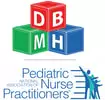Prader-Willi Syndrome (PWS) |
Page Contributors: Julia Chang, RN, BSN, and Claudine Kim, RN
|
Prader-Willi syndrome is the most common genetic cause of severe obesity. Occurring in about 1 in 10,000-30,000 people worldwide, it results from loss of function of several genes located on chromosome 15. 70% of PWS cases arise from this deletion of several genes found on the paternally acquired chromosome 15; paternal deletions are usually linked with more severe maladaptive behavior. Most cases of PWS are not inherited and are usually due to random changes early on in embryonic development. 25-29% of cases occur from maternal disomy 15, where both pairs of chromosomes 15 in the child are acquired from the mother. Another small percent of PWS results from an imprinting defect, where a microdeletion of epimutation controls expression of the imprinted genes in that area of chromosome 15. There is typically no family history of PWS for the affected children.
Newborns with hypotonia are often referred for genetic testing, and clinical symptoms can sometimes be enough for diagnosis. Other symptoms, such as behavioral issues, hypogonadism, short stature, intellectual disabilities, and severe obesity may arise as children get older. Treatment is often targeted toward symptoms. For example, many children with PWS are treated with growth hormone therapy, as they have low levels of serum growth hormone. This therapy has shown to increase height, decrease body fat, increase muscle mass and tone, increase bone mineral density, and aid with body composition.
Newborns with hypotonia are often referred for genetic testing, and clinical symptoms can sometimes be enough for diagnosis. Other symptoms, such as behavioral issues, hypogonadism, short stature, intellectual disabilities, and severe obesity may arise as children get older. Treatment is often targeted toward symptoms. For example, many children with PWS are treated with growth hormone therapy, as they have low levels of serum growth hormone. This therapy has shown to increase height, decrease body fat, increase muscle mass and tone, increase bone mineral density, and aid with body composition.
-
Prader-Willi Syndrome Criteria
Children younger than 3 years of age need at least four major criteria and at least one minor criterion for PWS diagnosis.
Children older than 3 years of age need at least five major criteria and at least three minor criteria for PWS diagnosis.
Children older than 3 years of age need at least five major criteria and at least three minor criteria for PWS diagnosis.
|
Major Clinical Criteria:
Additional Findings:
Physical Features of PWS:
|
Minor Clinical Criteria:
Behavioral Features of PWS:
Clinical Features of PWS:
|
Position Papers & Practice Parameters
- AAP Health Supervision for Children with Prader-Willi Syndrome
- A Comprehensive Team Approach to the Management of Prader-Willi Syndrome
Articles
- Recommendations for the Diagnosis and Management of Prader-Willi Syndrome
- Approach to the Child with Prader-Willi Syndrome
- Prader-Willi Syndrome: A Primer for Clinicians
- Endocrine Manifestations and Management of Prader-Willi Syndrome
- Mental Health Problems in Children with Prader-Willi Syndrome
Resources
Organizations
- Prader-Wili Syndrome Association
- Prader-Wili California Foundation: Resources for parents, relatives, and professionals
- Foundation for Prader-Wili Research
- International Prader-Wili Syndrome Organization
